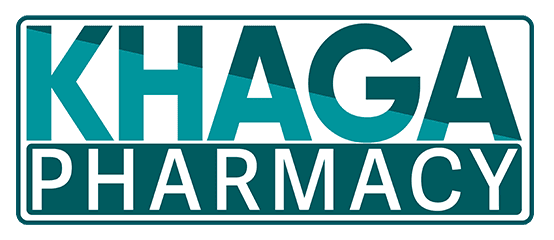
HEALTH NEWS
CDC Warning: Melatonin Misuse by Thousands of Children in the Whole World
-
Rahul Priydarss
CDC issues a warning about the misuse of melatonin among children worldwide. Learn about the risks, safety concerns, and expert recommendations regarding melatonin use in children. Understand the importance of melatonin in regulating the sleep-wake cycle and the potential side effects associated with its consumption. Get expert advice on safe usage and monitoring for parents and caregivers. Find answers to common questions about melatonin safety and regulation. Stay informed and ensure the well-being of your child with accurate information on melatonin use.
What Is Melatonin:
Melatonin, a hormone naturally produced by the body, plays a crucial role in regulating the sleep-wake cycle. It is primarily released in response to darkness, signaling the body that it’s time to sleep. This hormone has garnered significant attention for its potential therapeutic effects on sleep disorders, jet lag, and other conditions related to circadian rhythm disruption. With its popularity on the rise, melatonin is available in various forms, including pills, capsules, and even flavored gummies, making it accessible to a wide range of users seeking improved sleep quality and duration. Understanding the basics of melatonin and its functions is essential for those considering its use as a sleep aid or for other purposes.

Table of Contents
CDC Warning for Use of Melatonin:
The U.S. Centers for Disease Control (CDC) issues a cautionary alert regarding the use of melatonin in children. A previous report from the CDC revealed a significant surge, with a 530% increase, in calls to poison centers concerning pediatric melatonin ingestion. In 2012, approximately 8,300 calls were recorded, whereas by 2021, the number skyrocketed to over 52,500 cases. The report also highlighted two tragic incidents of children under the age of 2 who lost their lives after ingesting melatonin during this period.
Concerns arise due to a significant number of children requiring emergency room visits after unsupervised melatonin ingestion.
Alarming ER Visits Among Children:
The U.S. Centers for Disease Control (CDC) raises concern about nearly 11,000 cases of infants and young children ending up in the emergency room due to unsupervised ingestion of melatonin.
The CDC’s report, spanning from 2019 to 2022, identifies cases primarily involving children aged five and under who required emergency care after consuming melatonin without supervision.
The magnitude of the Issue: Based on 295 documented cases, researchers estimate approximately 10,930 ER visits during the specified period, constituting around 7% of all ER visits related to unsupervised medication exposure among infants and young children in the U.S.
Regulatory Gaps and Packaging Concerns: Melatonin, categorized as a supplement, lacks regulation by the Food and Drug Administration (FDA) and consequently does not mandate child-resistant packaging.
Instances cited in the CDC report often involve children accessing improperly closed bottles or managing to open them.
Product Safety Concerns: A study published in JAMA discovered discrepancies in melatonin products, with some containing hazardous levels of the hormone, while others contained cannabidiol (CBD) instead. The CDC underscores the heightened risks posed by such inconsistencies in ingredients or potency.
Educational Imperative for Caregivers: Emphasizing the importance of parental awareness, the report urges caregivers to educate themselves regarding the secure storage of all medications and supplements, including melatonin-infused gummies, to prevent inadvertent ingestion by children.
Potential Side Effects and Risks: Side effects associated with melatonin ingestion in children include drowsiness, headaches, agitation, and increased bed-wetting or urination, as reported by CNN. Notably, melatonin can interact with medications prescribed for allergic reactions, necessitating caution.
Expert Recommendations: Pediatricians, such as Dr. Cora Collette Breuner, advise parents to consult with healthcare professionals before administering melatonin to their children. Dr. Breuner underscores the temporary nature of melatonin usage in children, cautioning against prolonged reliance due to uncertain long-term effects on growth and development.
Lack of Regulation and Child-Resistant Packaging: Melatonin falls under the category of supplements, escaping regulation by the Food and Drug Administration (FDA). The absence of mandated child-resistant packaging increases the risk of accidental ingestion by children, leading to potential health hazards.
Importance of Melatonin in Regulating Sleep Cycle:
Melatonin plays a pivotal role in regulating the sleep-wake cycle, also known as the circadian rhythm in some other ways.
Natural Sleep-Wake Regulation: Melatonin, produced by the pineal gland, regulates the body’s internal clock, known as the circadian rhythm. Its secretion increases in response to darkness, signaling the onset of sleep.
Synchronization of Biological Functions: Melatonin helps synchronize various biological processes, including body temperature, hormone release, and sleep patterns. This synchronization ensures a consistent and restful sleep experience.
Promotion of Relaxation and Drowsiness: Melatonin promotes relaxation and drowsiness, making it easier for individuals to fall asleep. By inducing a state of calmness, melatonin aids in initiating and maintaining sleep throughout the night.
Optimization of Sleep Quality: The crucial role of melatonin in modulating the sleep cycle contributes to optimizing sleep quality. Adequate melatonin levels support restorative sleep, leading to improved overall well-being and cognitive function.
Support for Overall Health: Maintaining a healthy sleep-wake cycle with the help of melatonin is essential for overall health and vitality. Proper sleep hygiene, including melatonin regulation, is associated with reduced risk of various health conditions, such as cardiovascular disease and mood disorders.
The Popularity of Melatonin Products Among Adults:
Growing Trend: Melatonin products have experienced a surge in popularity among adults seeking solutions for sleep-related issues. The trend reflects a growing interest in alternative remedies for insomnia, jet lag, and other sleep disturbances.
Wide Availability: Melatonin supplements are readily available in various forms, including pills, capsules, and even flavored gummies. Their accessibility in pharmacies, health food stores, and online platforms contributes to their widespread use.
Addressing Sleep Problems: Adults turn to melatonin products to address a range of sleep problems, such as difficulty falling asleep, staying asleep, or adjusting to changes in sleep schedules. The effectiveness and perceived safety of melatonin supplements make them an appealing option for improving sleep quality.
Alternative to Traditional Medications: Some individuals prefer melatonin supplements as an alternative to prescription sleep medications due to concerns about dependency, side effects, or tolerance issues. The natural origin of melatonin and its reputation for promoting relaxation without causing grogginess the next day further enhance its appeal among adults.
Increasing Awareness: Public awareness campaigns, endorsements by healthcare professionals, and positive word-of-mouth recommendations contribute to the growing acceptance and use of melatonin products among adults. As individuals prioritize sleep as an essential aspect of overall health and well-being, the demand for melatonin supplements continues to rise.

CDC’s Report on ER Visits Related to Melatonin in Children:
Incident Overview: The U.S. Centers for Disease Control and Prevention (CDC) released a comprehensive report detailing emergency room (ER) visits linked to melatonin ingestion among children. The report sheds light on the alarming frequency of such incidents and their implications for pediatric health.
Timeframe and Scope: The CDC’s report covers the period spanning from 2019 to 2022, providing insights into trends and patterns regarding ER visits related to melatonin use in children. It offers a comprehensive analysis of cases involving children aged five and under who required emergency medical attention after ingesting melatonin without supervision.
The magnitude of the Issue: Based on documented cases, the report estimates a substantial number of ER visits attributable to melatonin ingestion among children during the specified timeframe. The findings underscore the prevalence of unsupervised melatonin use among young children and its potential consequences on their health and well-being.
Risk Factors and Contributing Factors: The report identifies various risk factors and contributing factors associated with melatonin-related ER visits, including inadequate supervision, improper storage of melatonin products, and lack of child-resistant packaging. Understanding these factors is crucial for developing targeted interventions aimed at preventing future incidents and safeguarding children’s health.
Public Health Implications: The CDC’s report highlights the public health implications of unsupervised melatonin use among children, emphasizing the need for enhanced education, awareness, and regulatory measures to mitigate risks. By raising awareness about the potential dangers associated with melatonin ingestion in children, the report aims to prompt action at both individual and systemic levels to prevent further harm and promote safe medication practices.
Safety Concerns and Discrepancies in Melatonin Products:
Product Safety Oversight: Safety concerns arise regarding the quality and consistency of melatonin products available in the market. These concerns stem from a lack of stringent regulatory oversight, as melatonin is categorized as a dietary supplement rather than a pharmaceutical drug.
Discrepancies in Ingredients and Potency: Studies have revealed significant discrepancies in the ingredients and potency of various melatonin products. Some products contain unsafe levels of melatonin, while others may contain different active ingredients altogether, such as cannabidiol (CBD).
Potential Risks: The presence of unsafe levels of melatonin or other undisclosed ingredients poses potential risks to consumers, particularly children and individuals with underlying health conditions. Inaccurate labeling and inconsistent potency increase the likelihood of adverse reactions and unintended side effects.
Interactions with Other Substances: Melatonin’s interaction with other substances, including medications and supplements, further compounds safety concerns. Consumers may unknowingly combine melatonin with other substances, leading to potentially harmful drug interactions or adverse effects.
Need for Regulatory Measures: The presence of discrepancies in melatonin products underscores the importance of implementing stricter regulatory measures. These measures should include mandatory testing, accurate labeling, and enforcement of quality standards to ensure the safety and efficacy of melatonin products.
Consumer Education and Awareness: Enhanced consumer education and awareness efforts are essential to empower individuals to make informed decisions about melatonin use. Consumers should be encouraged to carefully read product labels, consult healthcare professionals, and report any adverse reactions or discrepancies in product quality to regulatory authorities.
Collaborative Efforts for Safer Products: Collaboration among stakeholders, including regulatory agencies, manufacturers, healthcare professionals, and consumer advocacy groups, is necessary to address safety concerns and improve the quality of melatonin products. By working together, stakeholders can establish standards and best practices that prioritize consumer safety and promote transparency within the melatonin industry.
Side Effects of Melatonin in Children:
Many side effects show if anyone consumes extra melatonin.
Drowsiness: One of the most common side effects of melatonin in children is drowsiness. Melatonin’s sedative effect can cause children to feel excessively sleepy or lethargic, especially if taken in large doses or close to bedtime.
Headaches: Some children may experience headaches as a side effect of melatonin supplementation. These headaches can vary in severity and may occur shortly after taking melatonin or persist throughout the day.
Agitation: Melatonin can sometimes have paradoxical effects, causing agitation or restlessness in children rather than promoting relaxation. This side effect may manifest as irritability, hyperactivity, or difficulty calming down after taking melatonin.
Increased Bed-Wetting or Urination: Another potential side effect of melatonin in children is increased bed-wetting or urination, particularly during the evening or nighttime hours. Melatonin’s influence on fluid balance and urinary function may contribute to this symptom in some cases.
Interaction with Medications: Melatonin can interact with certain medications prescribed for children, such as those used to treat allergies or asthma. These interactions may alter the effectiveness or safety of the medications, necessitating caution and close monitoring by healthcare professionals.
Gastrointestinal Symptoms: Some children may experience gastrointestinal symptoms, such as nausea, vomiting, or stomach discomfort, as a result of taking melatonin. These symptoms are typically mild and transient but may warrant discontinuation of melatonin supplementation if they persist or worsen over time.
Long-Term Effects: The long-term effects of melatonin supplementation in children are not well understood. While melatonin is generally considered safe for short-term use, concerns remain regarding its potential impact on children’s growth, development, and hormonal balance over prolonged periods.
Expert Recommendations and Cautionary Advice:
Consultation with Healthcare Professionals: Before giving melatonin to children, parents need to consult with healthcare professionals, such as pediatricians or pharmacists. Healthcare providers can offer personalized recommendations based on the child’s age, health status, and specific sleep-related issues.
Temporary Use Only: Experts advise that melatonin should be used in children only as a short-term solution for sleep disturbances. Prolonged or continuous use of melatonin in children is discouraged due to concerns about its long-term effects on growth, development, and hormonal balance.
Monitoring for Side Effects: Parents should carefully monitor children for any potential side effects or adverse reactions while taking melatonin. Common side effects such as drowsiness, headaches, or gastrointestinal symptoms should be promptly reported to healthcare providers for further evaluation.
Individualized Dosage and Timing: The appropriate dosage and timing of melatonin administration may vary depending on the child’s age, weight, and sleep patterns. Healthcare professionals can guide the optimal dosage and timing to maximize the effectiveness of melatonin while minimizing the risk of side effects.
Caution with Other Medications: Parents should be cautious when giving melatonin to children who are taking other medications. Melatonin may interact with certain medications, including those used to treat allergies or asthma, potentially altering their effectiveness or safety.
Safe Storage and Access Control: Melatonin products should be stored safely out of reach of children to prevent accidental ingestion. Child-resistant packaging, when available, should be used to further minimize the risk of unintended exposure to melatonin.
Educational Resources for Parents: Parents should educate themselves about the potential benefits and risks of melatonin use in children through reputable sources. Access to reliable information can empower parents to make informed decisions regarding the use of melatonin as a sleep aid for their children.
Regular Follow-up with Healthcare Providers: Parents should schedule regular follow-up appointments with healthcare providers to assess the child’s response to melatonin therapy and address any concerns or questions that may arise. Open communication between parents and healthcare professionals is crucial for ensuring the safe and effective use of melatonin in children.
FAQs about Melatonin Misuse and CDS Warning:
A1: While melatonin is generally considered safe for short-term use in children, its long-term effects are not well understood. It’s essential to consult with a pediatrician before giving melatonin to children.
A2: Side effects of melatonin in children may include drowsiness, headaches, agitation, and increased bed-wetting or urination in the evening.
A3: No, melatonin supplements are not regulated by the FDA and do not require child-resistant packaging, which can pose risks, especially for children.
A4: Parents should keep all medications and supplements, including melatonin, out of children’s reach and sight and consult with a pediatrician before administering melatonin to children.
A5: Yes, melatonin can interact with other medications, especially those prescribed for allergic reactions. It’s crucial to consult with a healthcare professional before combining melatonin with other medications.

-Please remember, to always consult with healthcare professionals or Doctors for personalized advice related to medical conditions.
Conclusion:
While melatonin plays a crucial role in regulating the sleep-wake cycle, its use in children poses significant risks. Lack of regulation, safety concerns, and discrepancies in product ingredients highlight the need for caution when using melatonin, especially among young children. Parents and caregivers must prioritize safety and consult with healthcare professionals before administering melatonin to children.




